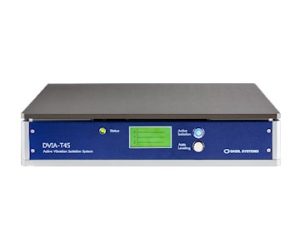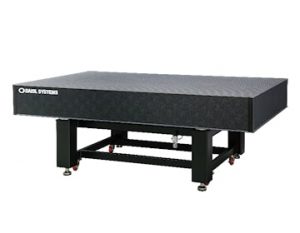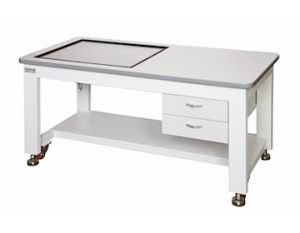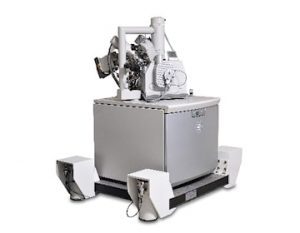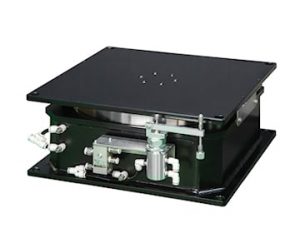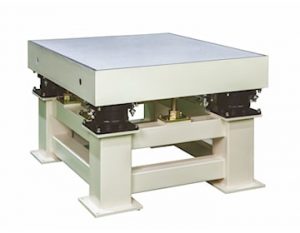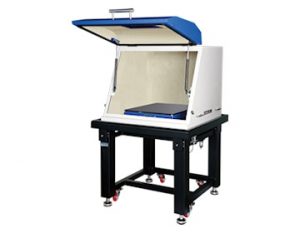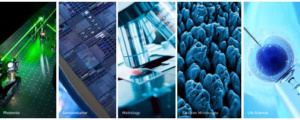 Installation Reports
Installation Reports
Vibration Isolation System Info
- Model: DVIA-ML1000
- Serial Number: 240403R2
Engineer
Chaewon Lee
Tuning Date
August 28, 2024
Installation Site
Samsung Electronics Future FIB Analyzing Lab
Equipment
- Manufacturer: TESCAN
- Equipment: FIB-SEM
- Model: Solaris X
Equipment Status
The microscope was installed on the DVIA-ML1000 platform.
Number of Tuning Trial
1st
Measurement Device
Brüel & Kjær LAN-XI DAQ Type 3050
-Hardware: B&K Front End Type 3050-A-040
-Software: B&K Pulse Labshop 22 Ve
Accelerometer
– PCB Accelerometer
– Model: 393B05
Measurement Device
– Bandwidth: 200 Hz
– Lines: 800
– Averaging: Spectrum Averaging
– Engineering Units: m/s
– Window: Hanning
– Overlap: Max
Vibration Specification
<10 um/s below 30 Hz, <20 um/s above 30 Hz
Conclusion
– After the installation of the DVIA-ML1000, floor vibration was reduced to within the vibration specification in all axes.
Measurement Summary
| Measurement Point |
Status | Axis | Vibration Specification |
Measurement Data | Result | ||
|---|---|---|---|---|---|---|---|
| Floor | DVIA-ML1000 | Floor | DVIA-ML1000 | ||||
| FIB LAB 1. Floor 2. DVIA-ML1000 |
Microscope is installed and is in operation. | Vertical | 10 um/s @ 1 - 30 Hz |
1.22E-05 m/s @ 2.5 Hz |
1.23E-06 m/s @ 2.5 Hz |
FAIL | PASS |
| 20 um/s @ 30 - 100 Hz |
1.76E-05 m/s @ 31.5 Hz |
1.33E-06 m/s @ 31.5 Hz |
PASS | PASS | |||
| Left to Right | 10 um/s @ 1 - 30 Hz |
1.27E-05 m/s @ 1.25 Hz |
1.34E-06 m/s @ 1.25 Hz |
FAIL | PASS | ||
| 20 um/s @ 30 - 100 Hz |
2.24E-06 m/s @ 63 Hz |
3.74E-07 m/s @ 63 Hz |
PASS | PASS | |||
| Front to Back | 10 um/s @ 1 - 30 Hz |
8.40E-06 m/s @ 1.25 Hz |
5.60E-07 m/s @ 1.25 Hz |
PASS | PASS | ||
| 20 um/s @ 30 - 100 Hz |
1.76E-06 m/s @ 63 Hz |
1.28E-07 m/s @ 63 Hz |
PASS | PASS | |||
Data and Image
Vertical VC Curves
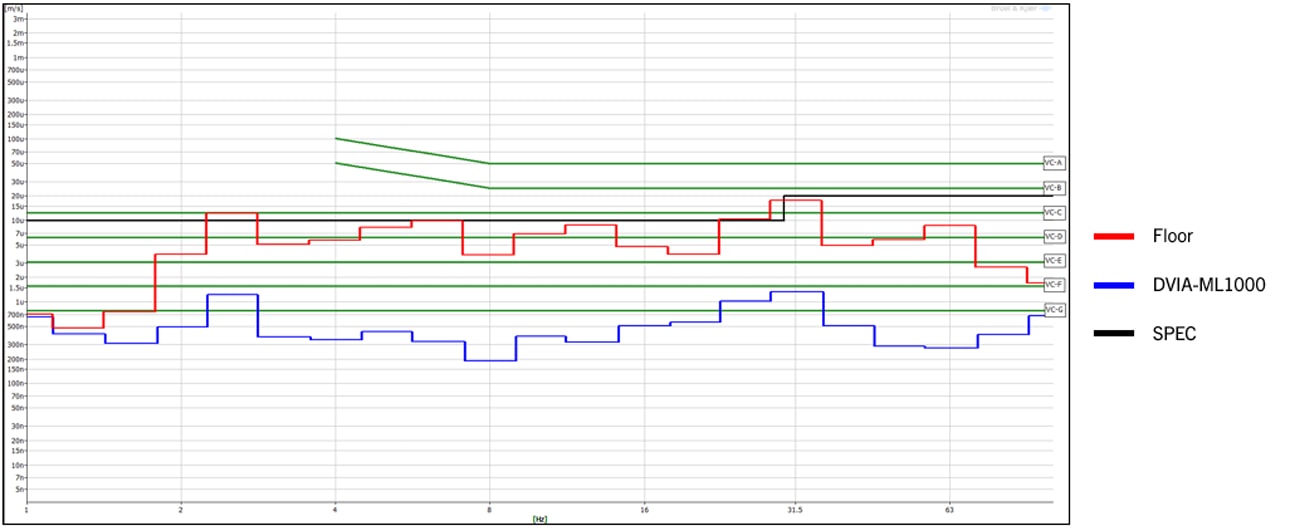
Vertical Narrow Band
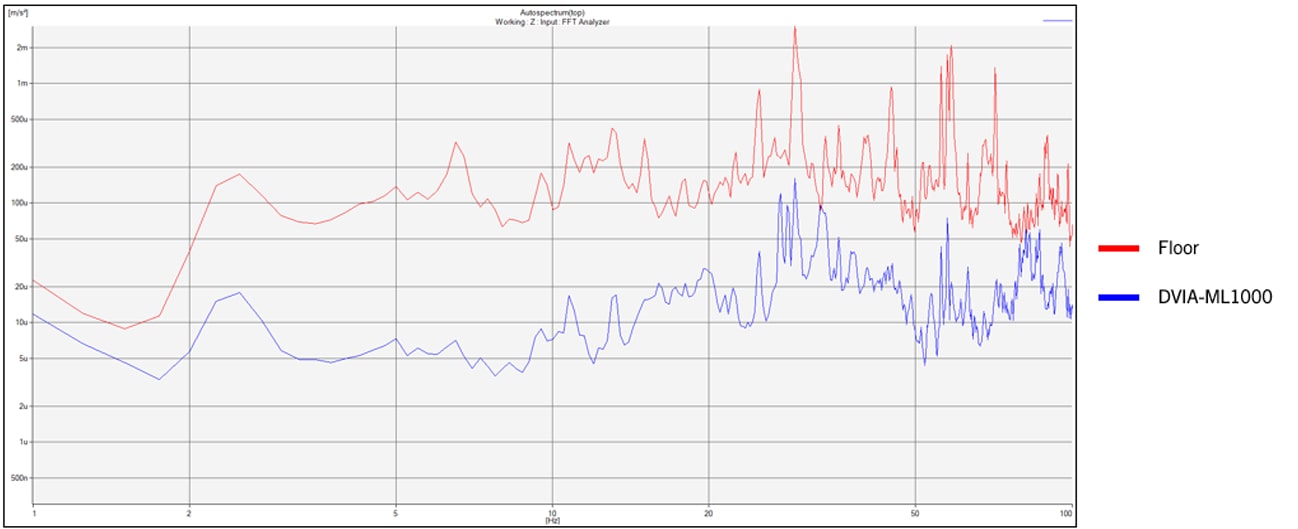
Vertical Transmissibility
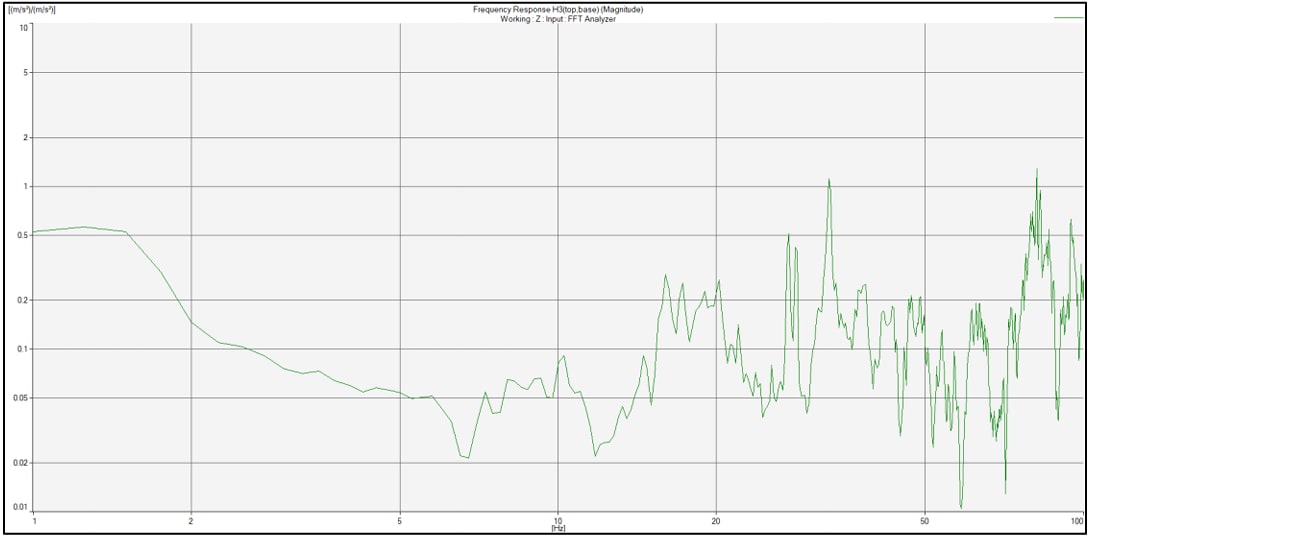
Left to Right VC Curves
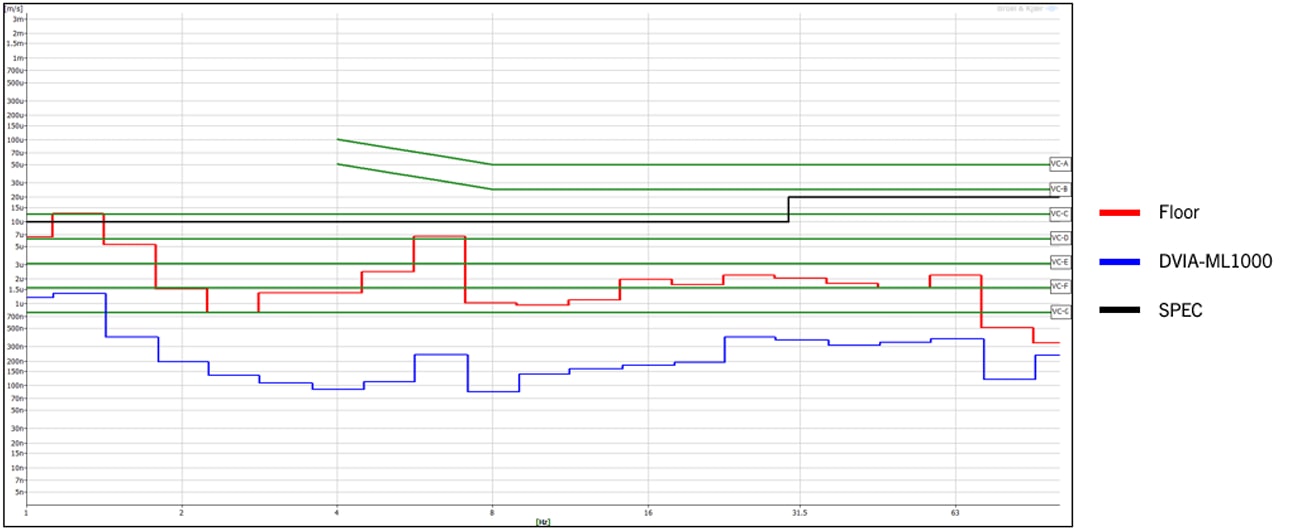
Left to Right Narrow Band
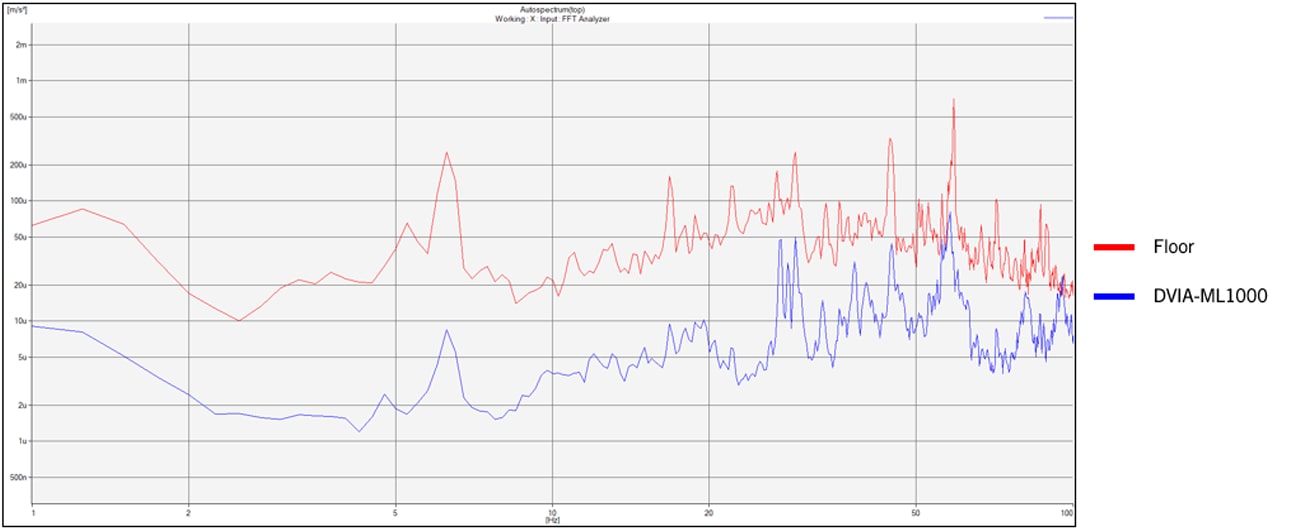
Left to Right Transmissibility
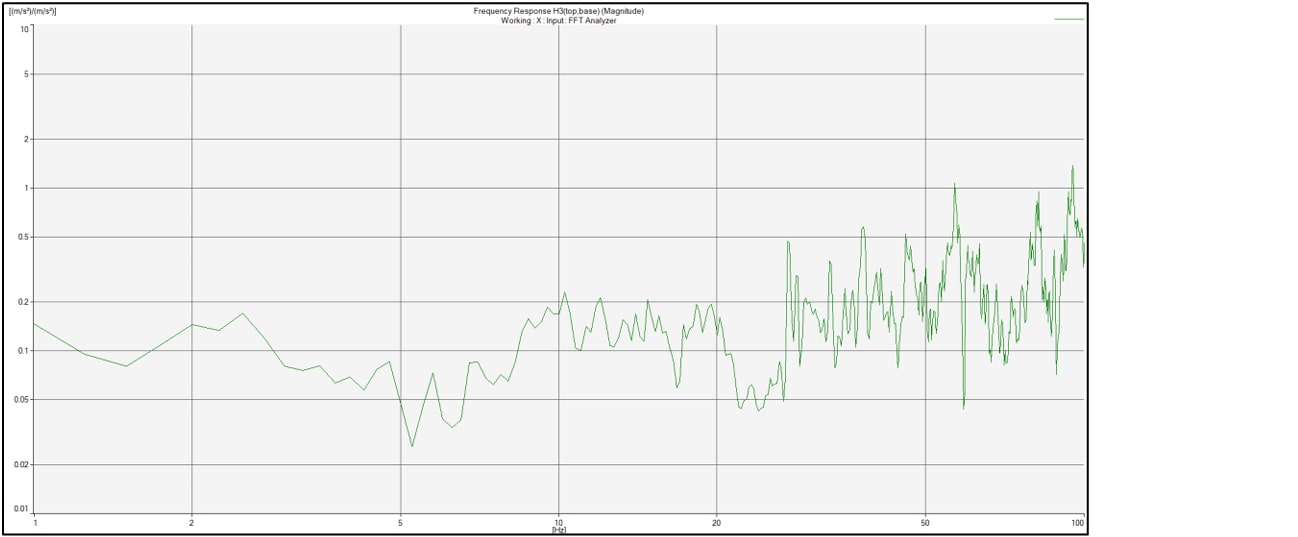
Front to Back VC Curves
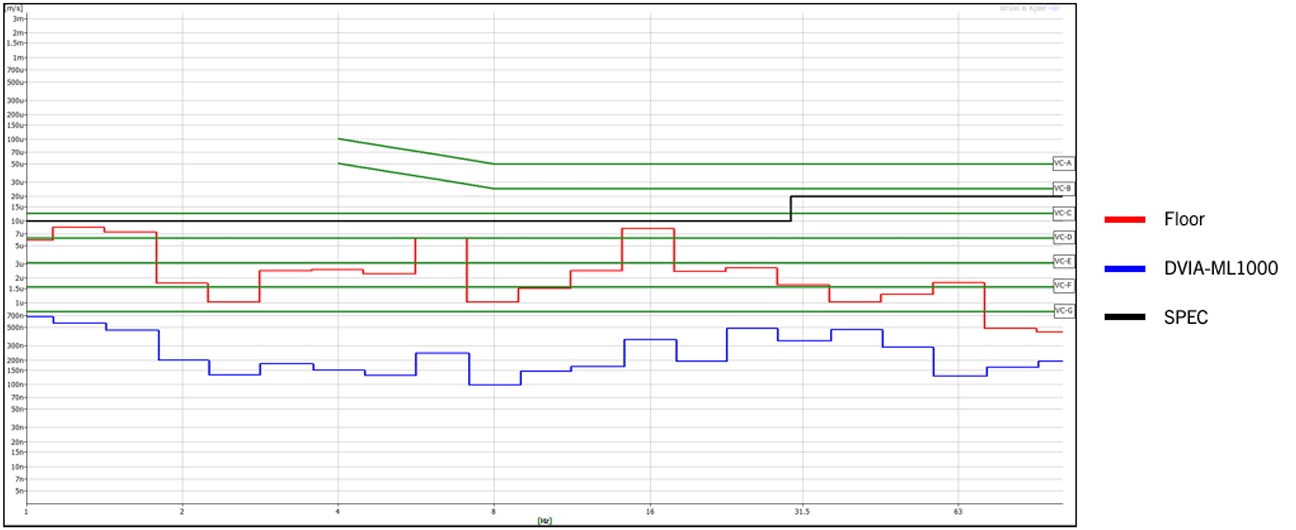
Front to Back Narrow Band
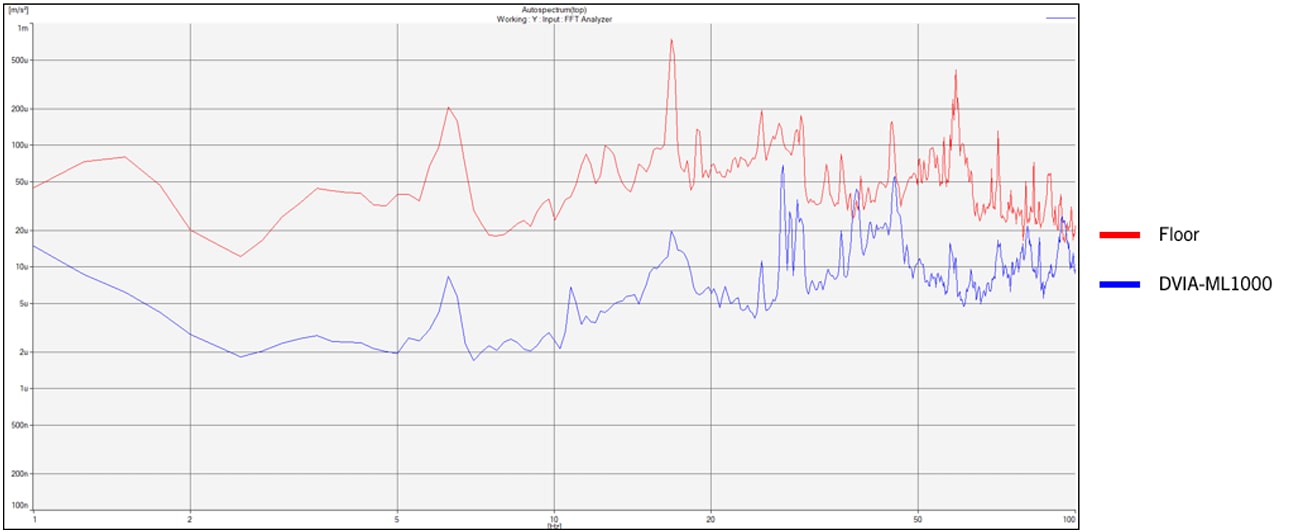
Front to Back Transmissibility
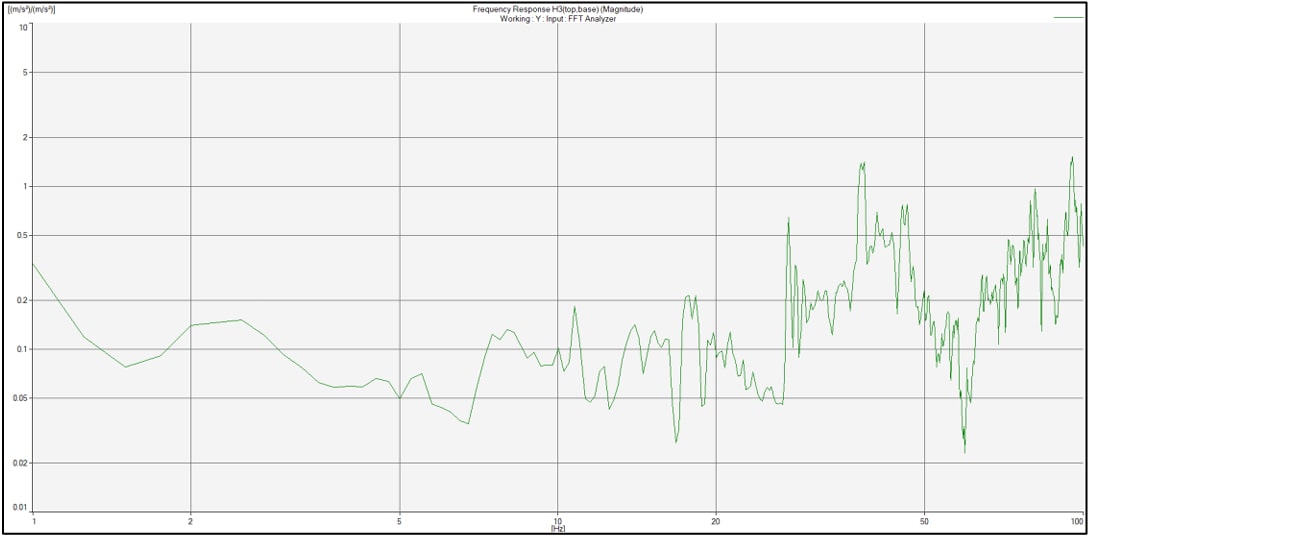
Reference
| Criterion Curve | Description | Amplitude1 µm/s (µin/s) |
Detail Size2 µm |
|---|---|---|---|
| Workshop (ISO) | Distinctly perceptible vibration. Appropriate to workshops and non-sensitive areas. | 800 (32,000) | N/A |
| Office (ISO) | Perceptible vibration. Appropriate to offices and non-sensitive areas. | 400 (16,000) | N/A |
| Residential Area (ISO) | Barely perceptible vibration. Appropriate to sleep areas in most instances. Usually adequate for computer equipment. hospital recovery rooms. semiconductor probe test equipment. and microscopes less than 40x. | 200 (8,000) | 75 |
| Operating Theatre (ISO) | Vibration not perceptible. Suitable in most instances for surgical suites. microscopes to 100x and for other equipment of low sensitivity. | 100 (4,000) | 25 |
| VC-A | Adequate in most instances for optical microscopes to 400x, microbalances, optical balances, proximity and projection aligners, etc | 50 (2,000) | 8 |
| VC-B | Appropriate for inspection and lithography equipment (including steppers) to 3μm line widths. | 25 (1,000) | 3 |
| VC-C | Appropriate standard for optical microscopes to 1000x, lithography and inspection equipment (including moderately sensitive electron microscopes) to 1μm detail size. TFT-LCD stepper/scanner processes. | 12.5 (500) | 1 - 3 |
| VC-D | Suitable in most instances for demanding equipment. including many electron microscopes (SEMs and TEMs) and E-Beam systems. | 6.25 (250) | 0.1 - 0.3 |
| VC-E | A challenging criterion to achieve. Assumed to be adequate for the most demanding of sensitive systems including long path. laser-based. small target systems. E-Beam lithography systems working at nanometer scales. and ofher systems requiring extraordinary dynamic stability. | 3.12 (125) | < 0.1 |
| VC-F | Appropriate for extremely quite research spaces: generally difficult to achieve in most instances, especially cleanrooms. Not recommended for use as a design criterion. only for evaluation. | 1.56 (62.5) | N/A |
| VC-G | Appropriate for extremely quite research spaces: generally difficult to achieve in most instances, especially cleanrooms. Not recommended for use as a design criterion. only for evaluation. | 0.78 (62.5) | N/A |
- 1. As measured in one-third octave bands ot frequency over the frequency 8 to 80 Hz (VC-A and VC-B) or 1 to 80Hz (VC-C through VC-G).
- 2. The detail size refers to thewidth in the case of microelectronics fabrication. the particle (cell) size the case ot medical and pharmaceutical research. etc. It is to imaging associated with probe technologies. AFMs. and nanotechnolow.
The intormatin given in thS table is for guidance only. In most instances, it is recommended that the advice of someone knowledgeable about applications and vibration requirements of the equipment and processes be sought.

